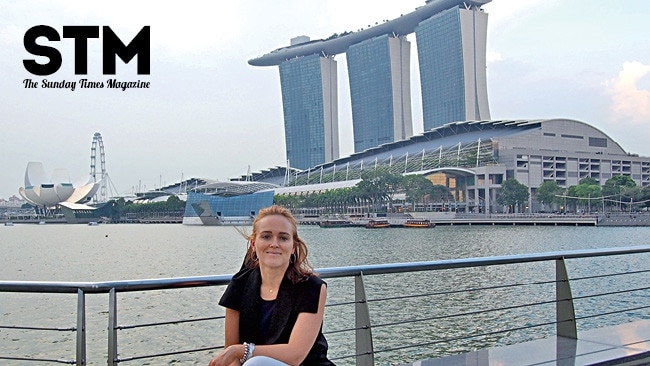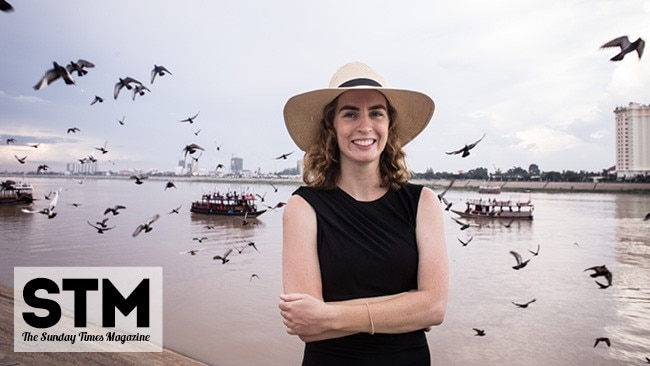Floating like a butterfly
A RIVER boat ride along the Ngo Dong offers a languid escape from the worries of the world, writes Ewen Bell.

IN NORTHERN Vietnam there's a river so gentle you might think that it never flows at all.
The water is clear enough to see the weeds below, and where it runs shallow the line between land and river is artfully hidden by crops of planted rice or wild flourishes of lotus flowers.
Welcome to Tam Coc and the Ngo Dong River boat ride.
After a week of travelling around the hill tribes near Hanoi, I thought I had seen every possible variation on rice fields: village women planting out in the misty mountain valleys; old men driving bullock ploughs along narrow terraced fields; and school children helping with the harvest on the flood plains of the Red River. But rice is nothing if not versatile, and so are Hanoi and its surrounding provinces.
Just a few hours' drive south of Hanoi lies the township of Tam Coc, where the rice fields are broken up by dramatic limestone hills and a complex web of connecting rivers and lakes.
The landscape was once home to an ancient capital. Remnants of the 10th century temples can still be found nearby at Hoa Lu.
Most of the farmhouses around Tam Coc look as if they might not be much younger – little more than cottages built close to the steep hills where the rocky ground offers additional height from rising water levels.
As the boat heads down the river the cottages are few and the limestone hills are many.
The gradual warming of the morning sun paints a haze across the more distant hills and brings life to those plants that cling to the edges of limestone cliffs.
The silence of the journey is a treasure – no outboard motors, no clunking diesels, no tooting horns; just the gentle rustle of oars and the ripple of water below the boat.
There are two of us for each vessel and occasionally we turn around to check on our guide.
Her name is Chu Van and her face fills with smiles every time we look back.
I think I can tell when someone is happy or just being pleasant, and Chu Van has all the signs of someone who loves her job.
Her English is basic but her French is eloquent: "The river is so peaceful you can hear a butterfly's wings."
Given her grasp of foreign language it's possible she has had a better education than I did.
I wonder aloud if she also accommodates Chinese tourists, and she obliges by telling me the age of her two children and how far they travel to school. There was more to her story, but I'd need more lessons in Mandarin before I could understand.
The course of the Ngo Dong River has much in common with the butterfly: both are gentle, beautiful and dart in different directions for no apparent reason.
At three stages along the journey the limestone hills engulf the water entirely and we float carefully beneath the jagged roof of caves. The butterflies do not follow us in here, but new ones are waiting at the other side.
Where the river slows down to a standstill and the water is too deep for rice cultivation, lotus plants thrive and cover the surface with a different shade of green and rich blossoms of pink.
Chu Van tells us that when a young man finds the perfect lotus flower, then his true love will be waiting nearby.
In a Buddhist country such as Vietnam the flower has special significance, for its transition from the muddy banks of the river to the sun-kissed blossom above the water represents a metaphor for enlightenment in a world full of suffering.
The blossom of the lotus plant is more than a thing of beauty.
The stamen of the young flower can be harvested for making lotus tea, and the fruit of the flower matures to yield a fleshy white pulp around the seeds. At the end of our journey to the last cave we are greeted by floating shops selling ready-to-eat lotus seeds, fresh fruit and cold drinks.
For Chu Van the hard work is still ahead.
Having taken us down the river she now has to row all the way back again. The return trip passes by quickly, more like a dragonfly than a butterfly, and Chu Van agrees to our request to slow down her pace with the oars. A few other boats catch us, including one rowed by an old man who might pass for a son of Confucius.
His long white beard accentuates a generous smile and the traditional bamboo headwear has been swapped for a felt hat, circa 1920s.
The most striking feature, as he paddles past us, is his use of feet to row instead of his hands.
As we get nearer to the town of Tam Coc the last stretch of river is marked by concrete bridges and hotels to accommodate guests who spend the night away from Hanoi. Soon the ripple of water pushed away by the oars will be replaced with a tide of touts and their incessant sales pitches.
On the last bend we encounter one last patch of lotus flowers. I can see the butterflies flittering above the blossoms, and for just a moment I think I really can hear the beating of their wings.
The writer travelled courtesy of Peregrine Adventures.
Sunday Mail (QLD)



